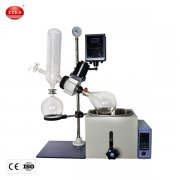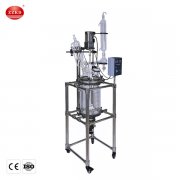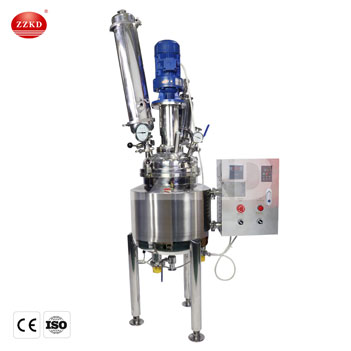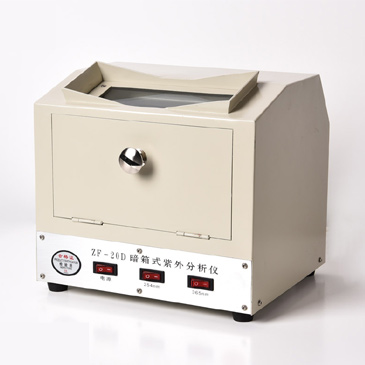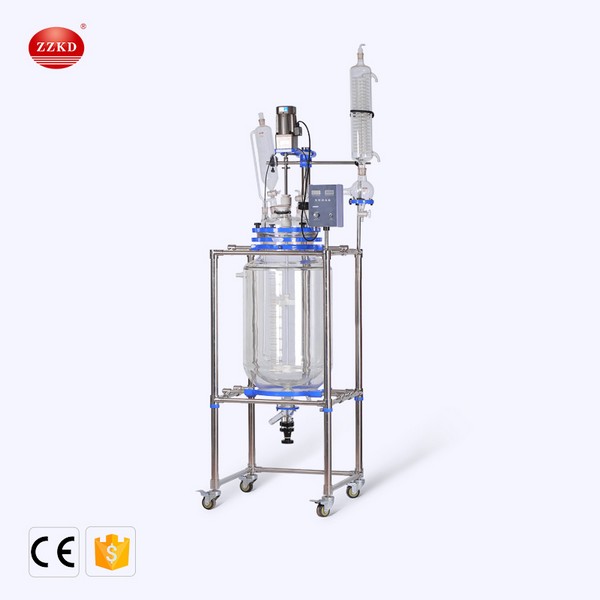In fact, the glass reactor is only one of many biochemical reactors. Other reactors also include glass-lined reactors, hydrothermal synthesis reactors, magnetic stirring reactors, electric heating reactors, and steam reactors. But one of the most frequently used is the glass reactor. The glass reactor has no pollution, high-temperature resistance, and corrosion resistance. Glass reactors can generally be divided into three categories, one is Single layer glass reactor, the other is a double-layer glass reactor, and the other is triple-layer glass reactor. Among them, single-layer glass reactors and
Double Wall Glass reactors are more commonly used, so this article will focus on the first two categories.
Types of chemical glass reactors
Single-layer glass reactor
The
Single layer glass reactor can provide a high-temperature reaction (the maximum temperature can reach 300℃); it can also be evacuated to do a negative pressure reaction. The single-layer glass reactor can carry out various solvent synthesis reactions under constant temperature conditions. The reactor is a partially closed structure. Under normal pressure or negative pressure, the reaction is stirred in a closed container with a set constant temperature, and the reflux and evaporation of the solution are controlled.
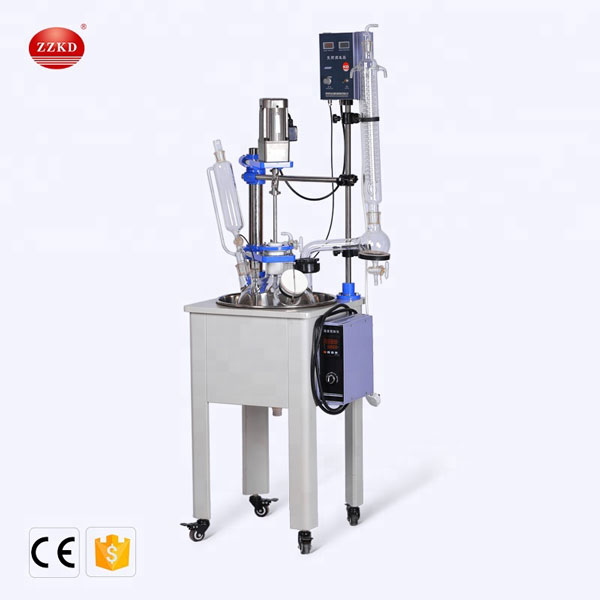
The working principle of single-layer glass reactor
The reaction kettle body is directly heated by the silver film heating plate so that the materials in the reaction kettle are heated at a constant temperature, and stirring can be provided. The materials are reacted in the reactor, and the evaporation and reflux of the reaction solution can be controlled. After the reaction is completed, the lid and motor part of the single-layer glass reaction kettle is mechanically lifted (electric lifting is optional), and the body of the glass reactor can be rotated 360 degrees, and the operation is simple and convenient. It is an ideal equipment for the chemical industry, laboratory, biopharmaceutical, and new material synthesis.
Double glass reactor
During the high-temperature reaction, the acceptable maximum temperature of the interlayer of the double-layer glass reactor can reach 300℃, and during the low-temperature reaction, the minimum temperature can reach -80℃; the double-layer glass reactor can be evacuated for negative pressure reaction. The double-layer glass reactor can carry out stirring reactions at room temperature, high-temperature reactions, negative pressure vacuum distillation reactions, separation and extraction, distillation reflux reactions, and concentration reactions.
ZZKD can provide you with double jacketed glass reactors of different capacities: for small capacity glass reactors, we have a
2l jacketed glass reactor. Besides, we also have large capacity reactors, such as a
50l jacketed glass reactor, and 100l jacketed glass reactor.
The working principle of the double-layer glass reactor
The double-layer glass reactor mainly uses the characteristics of its double-layer glass. The reaction material can be placed in the middle interlayer, and by stirring the reaction under normal pressure or negative pressure, a constant temperature (high temperature or low temperature) is injected into the interlayer. Melt or cooling liquid, realize constant temperature heating or cooling of materials and can provide stirring. In addition, the inner layer of the double-layer glass reaction kettle can be placed in the inner layer of the reaction and dissolved coal can be used for stirring reaction, and the interlayer is circulated through the cold and heat source. Evacuate and do a negative pressure reaction. The fully transparent reaction process is clear at a glance, and it is ideal experimental pilot equipment for modern biopharmaceuticals, fine chemicals, and new material synthesis.
How to choose a glass reactor?
At present, there are various kinds of glass reaction equipment on the market, and single-layer glass reactors and double-layer glass reactors are relatively common equipment. So, how do we choose these two glass reactors?
First of all, the single-layer glass reactor can complete high temperature, low temperature, vacuum, and other reaction experiments at the same time. The operation is simple, the reaction process is clear at a glance, and it is convenient to control the reaction process. It is an ideal pilot and production equipment for modern synthetic chemicals, biopharmaceuticals, and new materials.
The double-layer glass reactor is designed with double-layer glass, and the inner layer is equipped with a reaction solvent, which can be used for stirring reactions. . The double glass reactor is based on a multifunctional single reactor. And after years of improvement, the reactor is based on a single multi-functional glass reactor, which facilitates high and low-temperature control, rapid heating, and cooling in the experimental process.
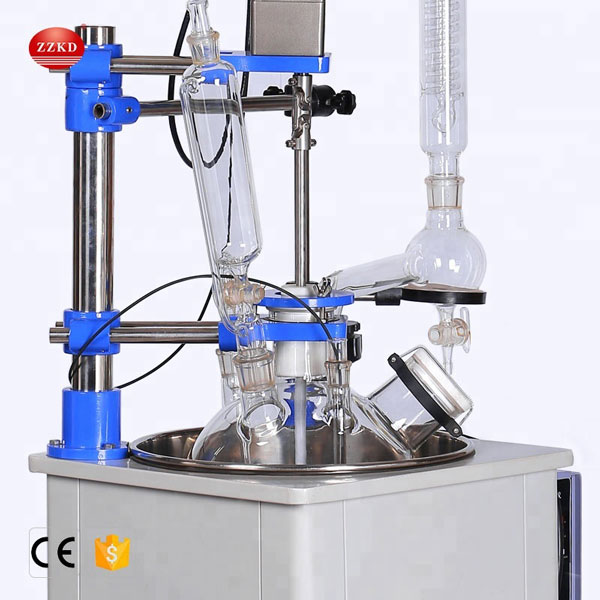
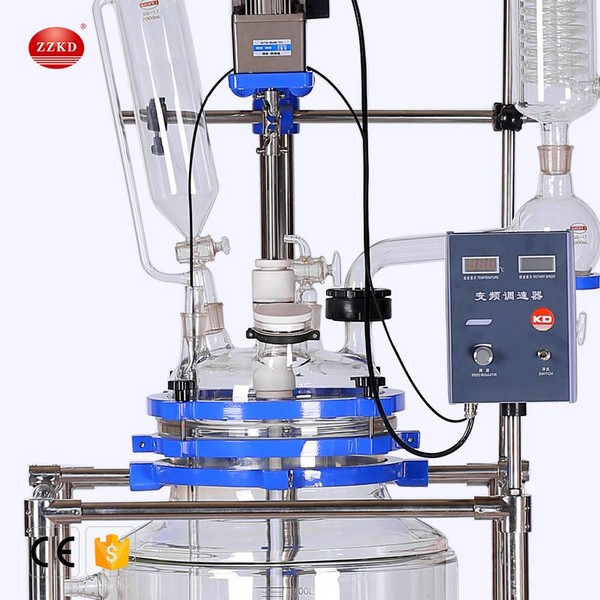
Secondly, the heating of the double-layer glass reactor is completely completed through the interlayer. First, the double-layer glass reactor is connected to the circulating oil bath and hot oil is passed through the interlayer, and the material can be heated by plugging in the power supply; do a low-temperature reaction The same is true, just change the solvent in the interlayer to ethanol. The interlayer can make the heating of the material uniform, and at the same time, it is convenient to directly observe the stirring reaction process of the material. Through the interlayer, the double-layer glass reactor can not only complete high-temperature experiments but also complete low-temperature reactions. The single-layer glass reactor has its own heating device and does not need to use the interlayer to complete the heating.
To sum up the above, if the test requirements require multi-stage temperature control requirements, choose a double-layer glass reactor, and the temperature control equipment matched with the double-layer reactor can control the temperature in stages. If there is no special requirement, choose a single-layer reactor. After understanding these, I believe you can better choose the glass reactor.

 Products
Products





